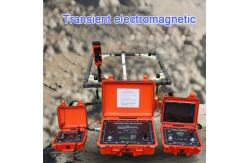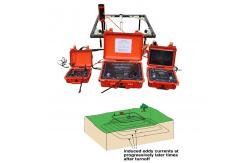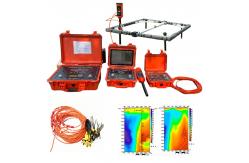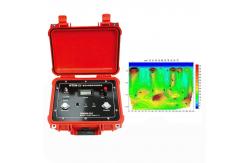WTEM Transient ElectroMagnetic Instrument for shallow surface geophysical exploration and survey
|
|
WTEM Transient ElectroMagnetic Instrument for shallow surface geophysical exploration and survey
Transient Electromagnetic Method (TEM) is a geophysical exploration method that uses an ungrounded return line or a grounded line source to emit a pulsed magnetic field underground. During the interval of a pulsed magnetic field, a coil or a grounded electrode is used to observe the secondary eddy current field.
Law of electromagnetic induction: When the current in the transmitting coil changes, an alternating
magnetic field will be generated in the surrounding space. This
primary magnetic field will induce eddy currents in the underground
conductive medium, and the eddy currents will generate secondary
magnetic fields.
Great penetration depth: Compared with other geophysical methods, transient electromagnetic
method can detect deeper underground geological structures, and the
effective detection depth can generally reach hundreds of meters or
even thousands of meters.
The Copper-Lead-Zinc Polymetallic Deposit Exploration Project Succeeded in Baiyin China, Where SSIP has successfully suppressed strong electromagnetic interference
Baiyin copper-lead-zinc polymetallic mining area has strong electromagnetic interference (caused by underground mining, concentrating mill and smelting plant), reliable data cannot be collected by the imported IP instrument which values more than 2 million RMB yuanes, so that the inversion cannot converge. The spread spectrum IP (SSIP) method has been verified effectively in this area. The abnormal shapes of SSIP are entirely consistent with the ore samples of factual borehole, and the effective exploration depth reaches more than 1000 meters (Fig. 1). The Cu-Mo Deposit was explored successfully by SSIP in Qiushuwan China, effectively distinguishing ore and non-ore anomalies.
In the working area of the Qiushuwan Copper-Molybdenum Mine in Henan of China, affected by the complicated terrain and the developing shallow pyrite halo, a large number of interference IP anomalies generated, which is the main difficulty of this exploration project. The project implemented the spread spectrum IP sounding. There was low-resistance in the ore body showed in the exploration results, whereas there were not ore bodies in several low-resistance area (Fig. 2a). The relative phase response of low-frequency IP (Fig. 2c) shows that many non-mineralized anomalies are unrelated to the copper-molybdenum deposits, such as the anomalies caused by shallow pyrite halos and the small-scale skarn ore bodies. By applying the relative phase response of mid-frequency (Fig. 2b), it was found that the IP anomalies caused by shallow pyrite halo and skarn ore bodies are greatly weakened compared to that at low frequency, while the IP anomalies caused by porphyry ore bodies are greatly enhanced. Finally deep porphyry copper-molybdenum ore bodies were verified and found, and the abnormal range is basically correspondent to the ore bodies, in which the resource amount of molybdenum reaches 100,000 tons, with a potential economic value of more than 20 billion RMB yuan. A Lead-Zinc Mine Exploration in Xizang China succeeded by the Spread spectrum IP method, effectively distinguishing between ore and carbon layers
According to the samples spectral IP response of the lead-zinc ore and the carbon layer in a mining area in Xizang (Fig. 3), the lower the frequency of lead-zinc ore, the stronger the response; while the higher the frequency of carbon layer, the stronger the response. There are significant differences in spectral IP response between dense massive lead-zinc ore and carbonaceous porphyry, so the IP anomalies of lead-zinc ore and carbonaceous layer can be distinguished by different frequency IP response. Under the excitation of ultra-long period (256s) spread spectrum wave, the IP response of large-scale dense massive lead-zinc ore body is greatly enhanced, and the IP response of carbon layer is suppressed (Fig. 4a). Under the excitation of conventional IP frequency (0.25Hz), the large-scale dense massive lead-zinc ore body has almost no IP response, and the IP response of the carbon layer is very strong, which is consistent with the measured results of the spectral IP response of the specimens (Fig. 4b).
Chongqing Gold Mechanical & Electrical Equipment Co., Ltd is specialized in manufacturing and developing of Geophysical Exploration Instrument such as Resistivity Meter, IP Instrument, Resistivity Image, Seismic Instrument, Electromagnetic Instrument, Borehole Camera, Borehole Logging System, Water Level Meter; Borehole Drilling Equipment including Core/ Water Well/ Tunnel/ Engineering/ Anchor Drilling Rigs&Accessory and Geodetic Surveying Instrument(GNSS RTK System, Total Station, GIS Mapping and Echo Sounder).
|
||||||||||||||||||||||||||||||||||||||||||
| Product Tags: WTEM Transient ElectroMagnetic Instrument Shallow Surface Geophysical Exploration Instrument Geophysical Exploration ElectroMagnetic Instrument | ||||||||||||||||||||||||||||||||||||||||||

|
Long Battery Life Seismic Refdraction Equipment Transient Multifold Rayleigh Wave Prospectingbuilding Base |

|
Geophysical Sensor Array Seismic Vibrator Truck Core Sample Scanner |

|
Volcanic Observation Magnetometer Environmental Magnetic Sensor Fault Locating Magnetometer |

|
0.02μa Sampling Resolution Dual Electrode Spacing System High Power Transmitter For Mineral Resource Exploration |
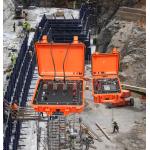
|
Resistivity IP Meter Geophysical Exploration Instrument with Digital Accuracy ±1% 900V Processing Power and ±6A Maximum Supply Current |
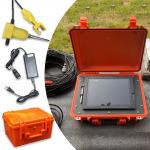
|
Engineering Seismograph with 50m to 100m Depth 38hz Frequency and 50/40mm Diameter for Geophysical Exploration |

